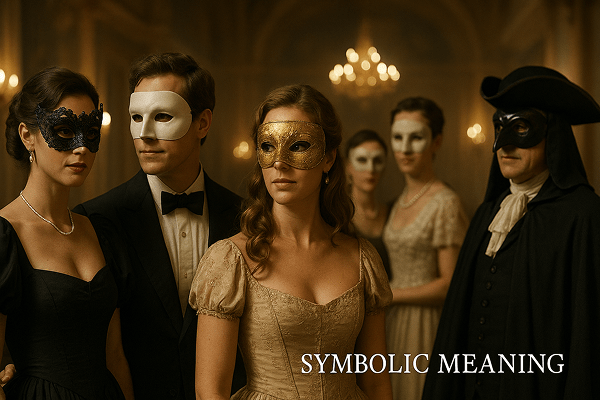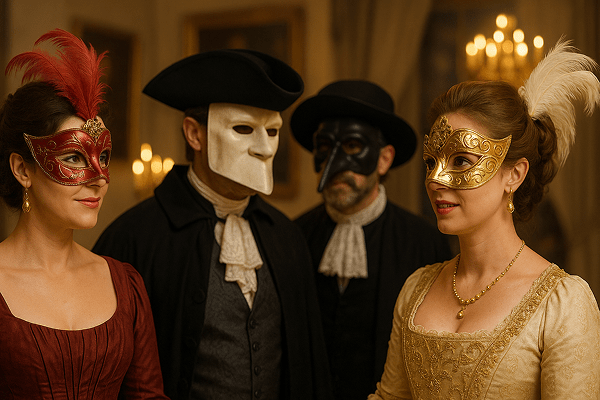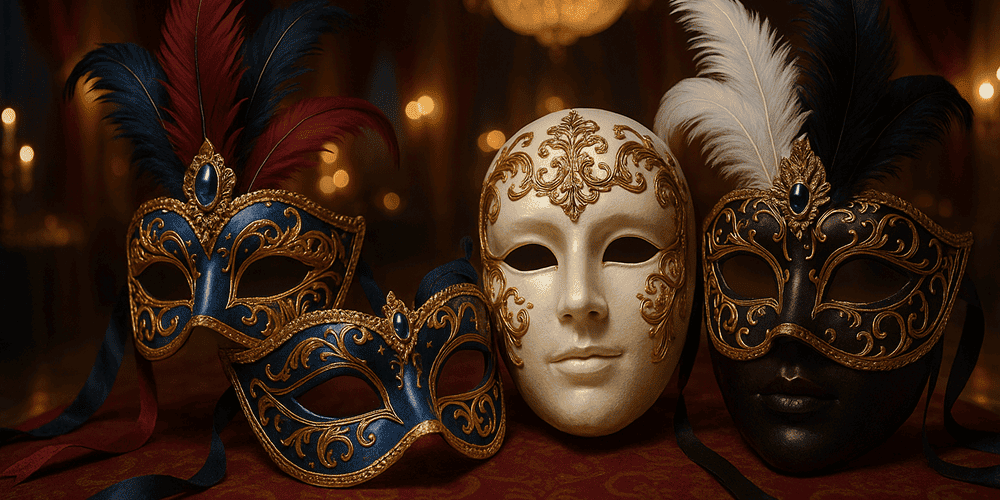Classic Masquerade Masks are timeless symbols of elegance, mystery, and transformation. Characterized by their refined shapes, intricate decorations, and association with the grand masquerade balls of Europe, these masks are typically crafted from papier-mâché, leather, or ceramics, and adorned with gold leaf, feathers, lace, and gemstones. The most iconic classic styles include the Bauta (full-face), Colombina (half-face), Volto, Moretta, and the long-nosed Medico della Peste. Originating in Italy — especially Venice — during the Renaissance and Baroque periods, Classic Masquerade Masks have become a global icon, inspiring countless adaptations in festivals, theater, and contemporary Party Masks. For in-depth collections and history, visit toddmasks.com.
Historical Origins of Classic Masquerade Masks
The origins of Classic Masquerade Masks can be traced back to the medieval festivals and carnival traditions of Venice. The word “masquerade” comes from the Italian “mascherata,” meaning a masked entertainment or procession. Initially, masks were used during Carnival to allow Venetians to transcend rigid class boundaries, indulge in playful subversion, and participate in public spectacles without revealing their identities.
By the Renaissance, masquerade balls became popular in royal courts across Europe. The design and function of masks evolved: from simple visors to ornate, hand-crafted works of art. The 18th century saw the rise of the Venetian mask-making guilds, with strict standards for artistry and authenticity. Notable historical references include paintings by Pietro Longhi and documents from the Venetian Republic regulating mask use. Surviving artifacts — antique masks, engravings, and costumes — provide a window into the rich history of these alluring objects.
Cultural Significance and Symbolism of Classic Masquerade Masks
Classic Masquerade Masks hold deep symbolic meaning. In Venetian society, masks symbolized both social freedom and the temporary suspension of everyday norms. They enabled participants to assume new personas, explore forbidden desires, and critique authority without consequence.
Spiritually, masks were sometimes linked to rites of passage, fertility rituals, or the invocation of protective spirits. In literature and legend, masquerade masks are associated with romance, intrigue, and transformation. Socially, they fostered a sense of unity and equality — at least for the duration of a ball or festival. The continued use of masks in theater, film, and literature keeps these symbolic associations alive today.

Materials and Crafting Techniques of Classic Masquerade Masks
Classic Masquerade Masks are crafted using a range of traditional materials:
- Papier-mâché: Lightweight and moldable, ideal for painted designs.
- Leather: Durable and comfortable for extended wear.
- Ceramics and porcelain: Used for more decorative or collectible masks.
- Metal and lace: For embellishments and added luxury.
The process typically involves:
- Sculpting a mold or form
- Layering papier-mâché or leather and allowing it to dry
- Sanding and shaping the mask
- Painting, gilding, and decorating with feathers, jewels, or fabric
- Adding ribbons or handles for wearing
Special techniques include gold leaf application, hand-painting, embossing, and the use of Venetian glass. Regional variations exist: Venetian masks are known for their baroque opulence, while French and Austrian masks might favor minimalism or pastel colors. Color symbolism is significant — gold for wealth, black for mystery, red for passion, and white for purity.
Functions and Uses of Classic Masquerade Masks
Classic Masquerade Masks serve several functions:
- Ritual and ceremonial use: Central to Carnival and pre-Lenten festivities, marking a period of social inversion and celebration.
- Theatrical application: Key components of commedia dell’arte and opera, helping actors portray archetypal characters.
- Festivals and celebrations: Essential at masquerade balls, costume parties, and modern events inspired by historical traditions.
- Contemporary use: Featured in fashion shows, weddings, art installations, and as collectible decor. Modern Party Masks often draw inspiration from classic designs.
Over time, the role of masks has shifted from ritual and social subversion to entertainment, fashion, and art.

Regional Variations of Classic Masquerade Masks
While Venice remains the heart of the classic masquerade tradition, regional variations include:
- Venetian Masks: Bauta, Colombina, Volto, Moretta, and Medico della Peste.
- French Masquerade Masks: Often lighter and more minimalist, with an emphasis on lace and pastel hues.
- Austrian and German Masks: Simpler designs used in court festivities and operatic performances.
- Russian and Eastern European Masks: Folk art influences, with floral motifs and bold colors.
Comparing Classic Masquerade Masks to other global mask traditions highlights both the shared roots and unique local aesthetics that define each region.
Famous Examples and Notable Collections of Classic Masquerade Masks
Some of the most renowned Classic Masquerade Masks are housed in major museums:
- Museo di Palazzo Mocenigo, Venice: Historic Venetian masks and costumes.
- Victoria and Albert Museum, London: European masquerade artifacts.
- Musée Carnavalet, Paris: French masks and ball costumes.
Private collections and fashion houses also display rare or artist-signed masks. Notable finds include 18th-century hand-painted masks, limited-edition artist collaborations, and masks worn in famous operas or films. For digital galleries and insights, visit toddmasks.com.
